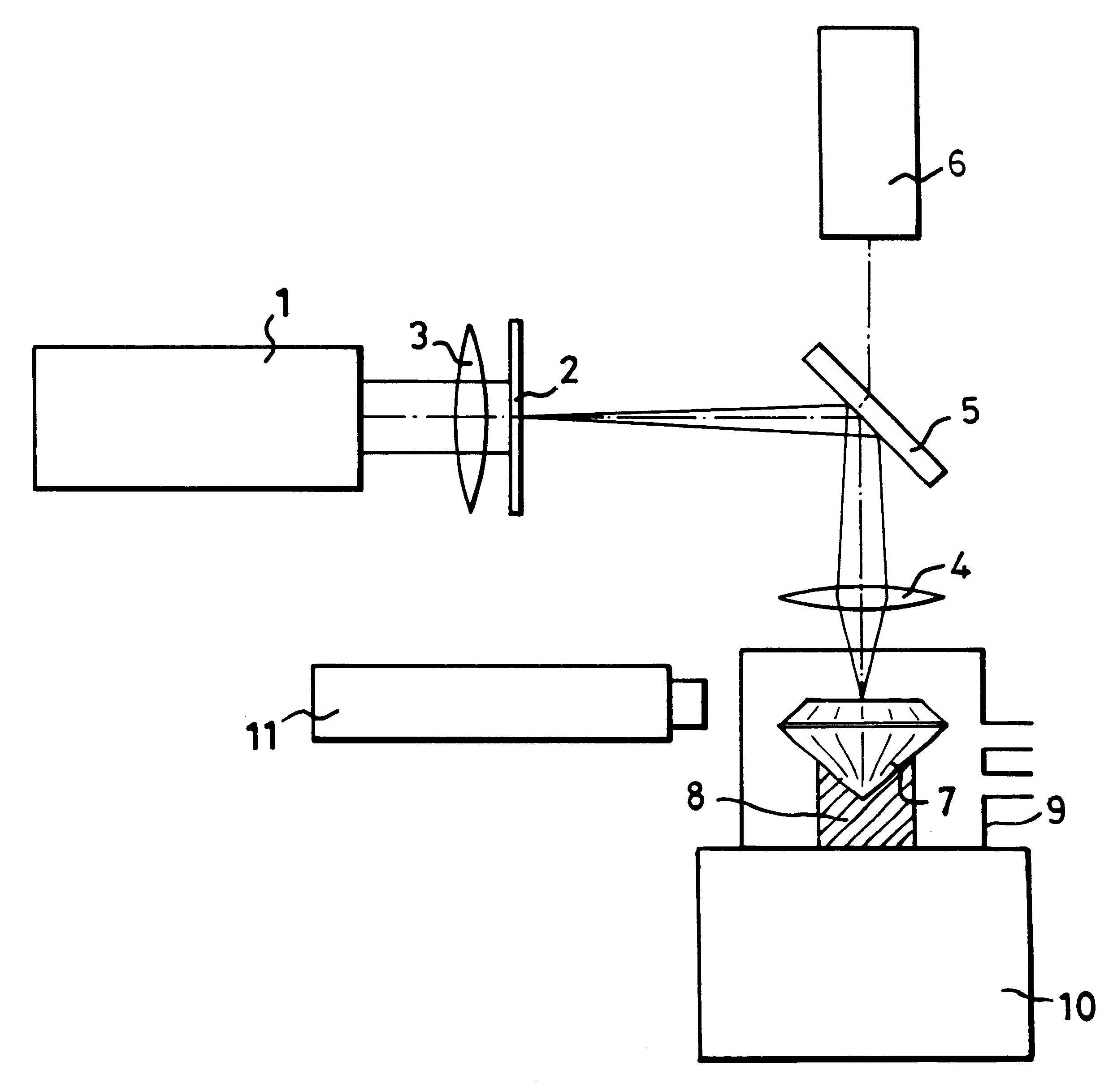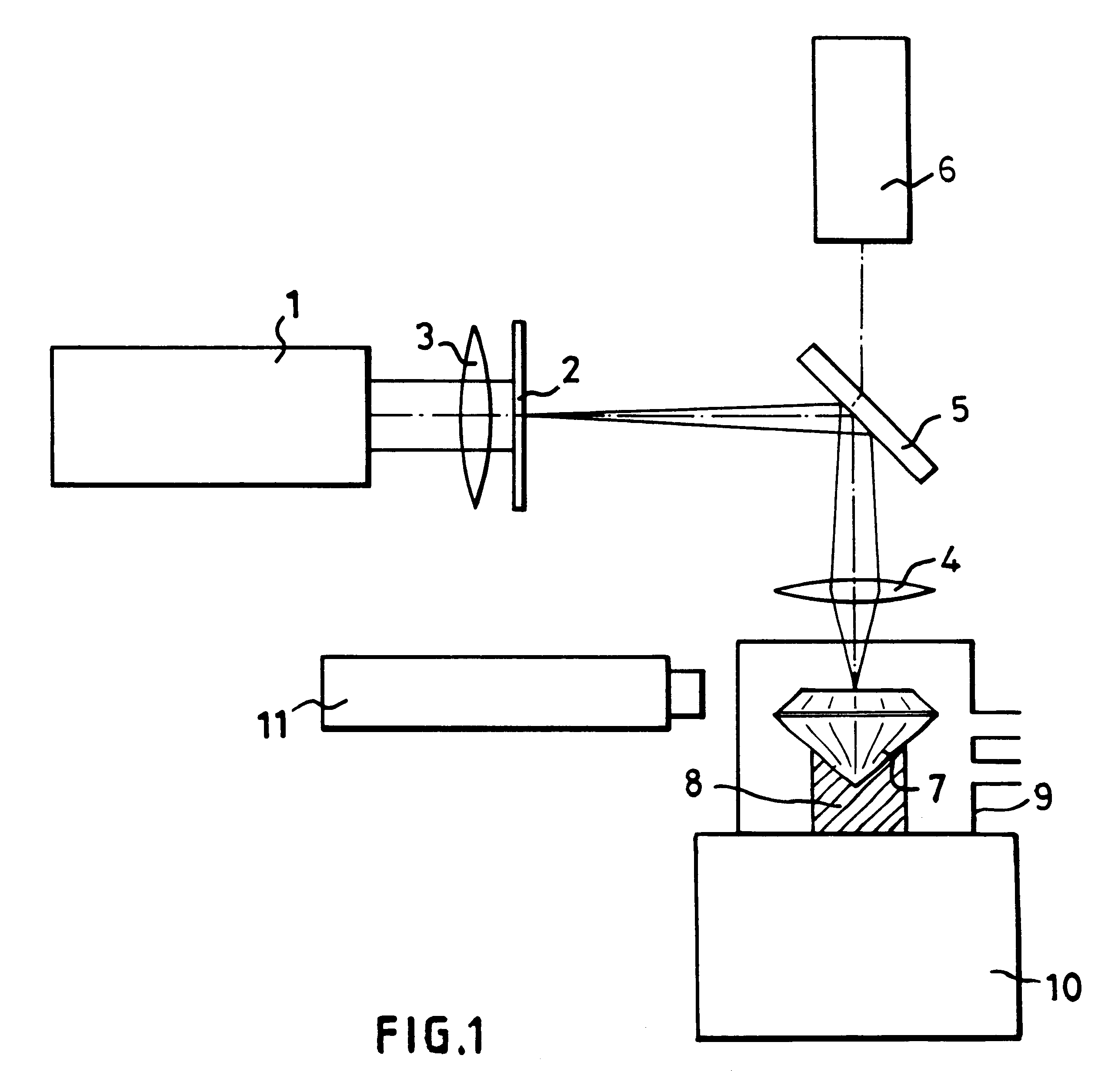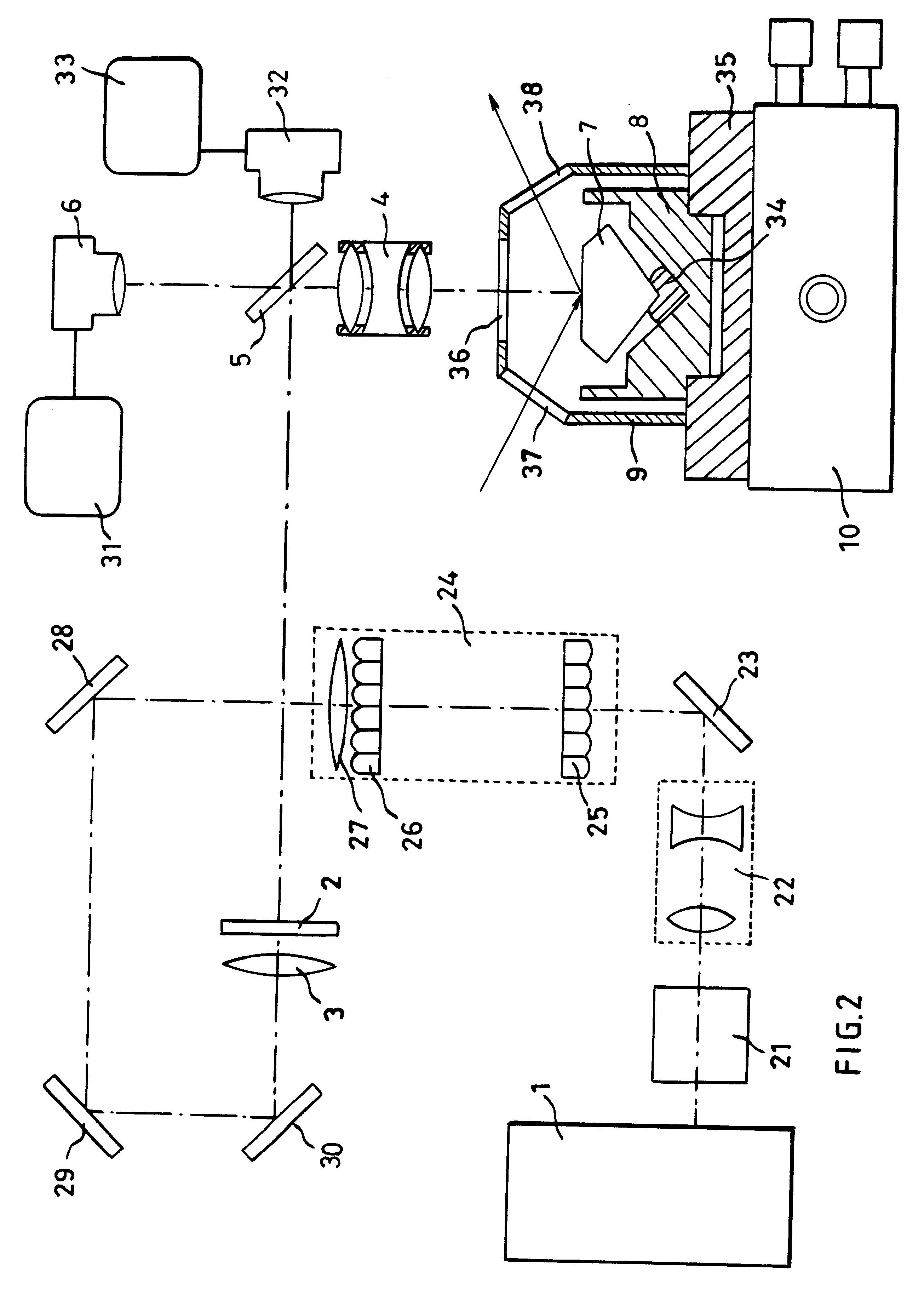Marking diamond
a diamond and diamond technology, applied in the field of diamond marking, can solve the problems of reducing the visible area of the mark, affecting the resistance of the material to irradiation, and affecting the optical quality of the cvd material, so as to avoid excessive heating of the stone, reduce the visible area, and reduce the energy consumption
- Summary
- Abstract
- Description
- Claims
- Application Information
AI Technical Summary
Benefits of technology
Problems solved by technology
Method used
Image
Examples
example 1
Using Apparatus as in FIG. 1
The laser 1 produced pulses of approximately 30 nanoseconds duration at a rate of 20 Hz. It would be preferable to use a laser with a higher repetition rate, eg 200 Hz, to complete the mark more quickly. The fluence at the diamond 7 was set in the range of 0.2-1.2 J / cm.sup.2 per pulse, a preferred value being about 0.85 J / cm.sup.2 per pulse. Typically, in air (20% oxygen, 80% nitrogen), marks 10-20 nm deep were produced (in 50 seconds) with 1000 pulses. For a given set of process conditions, the depth of the mark is proportional to the number of pulses used in its formation. When the process was carried out in air but with nitrogen purging, ie in an atmosphere of nitrogen with a small percentage of oxygen, etching occurred at a greatly reduced rate; it is believed that no etching would occur in an atmosphere of pure nitrogen. When the process is carried out in a good vacuum (10.sup.-6 mbar), no observable etching takes place.
The marks produced were a sequ...
example 2
Using the Apparatus of FIG. 2
Diamond surfaces of various crystallographic orientation were irradiated using the apparatus of the second embodiment. The temperature was room temperature. The mask 2 was the 1951 USAF test target. Each irradiated region of the sample was exposed for 4 minutes at a pulse rate of 50 Hz, to deliver 12000 pulses.
It was first observed that the marks produced were of a very high quality with no evidence of the coherence artifacts present in Example 1. Since the irradiation was more uniform, it was possible to work with higher average fluences than in Example 1 without any risk of blackening or ablation near the edges of the marks. Specifically, when working with a reagent atmosphere of oxygen at atmospheric pressure, the maximum fluence that could be safely used was about 1.8 J / cm.sup.2 for orientation surfaces, 2.0 J / cm.sup.2 for surfaces and in excess of 2.2 J / cm.sup.2 for surfaces.
To determine the importance of a reagent atmosphere, a series of irradia...
PUM
| Property | Measurement | Unit |
|---|---|---|
| wavelength | aaaaa | aaaaa |
| wavelength | aaaaa | aaaaa |
| depth | aaaaa | aaaaa |
Abstract
Description
Claims
Application Information
 Login to View More
Login to View More - R&D
- Intellectual Property
- Life Sciences
- Materials
- Tech Scout
- Unparalleled Data Quality
- Higher Quality Content
- 60% Fewer Hallucinations
Browse by: Latest US Patents, China's latest patents, Technical Efficacy Thesaurus, Application Domain, Technology Topic, Popular Technical Reports.
© 2025 PatSnap. All rights reserved.Legal|Privacy policy|Modern Slavery Act Transparency Statement|Sitemap|About US| Contact US: help@patsnap.com



